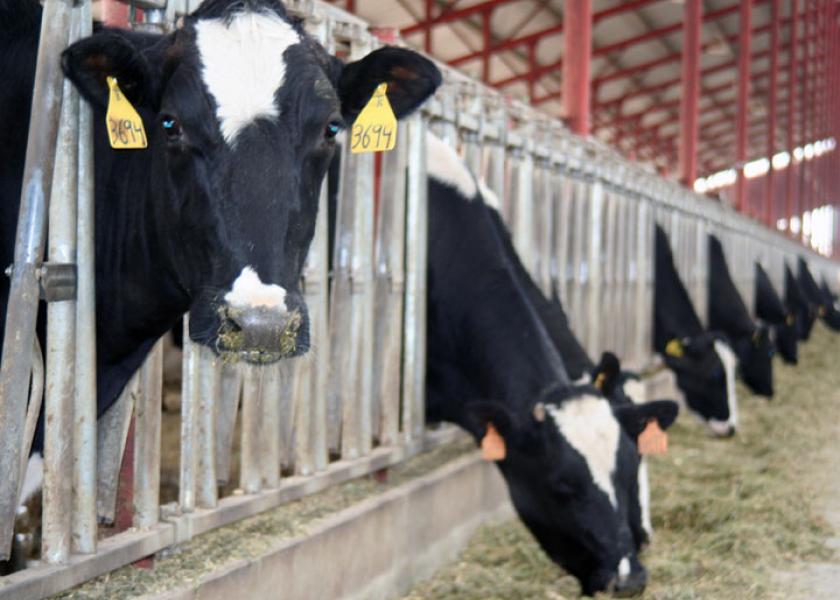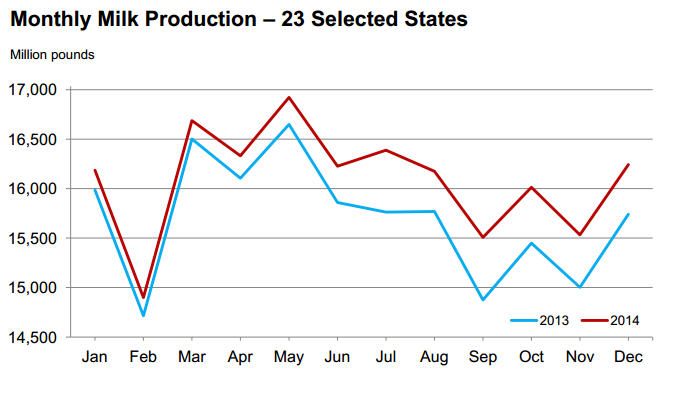USDA: Middle America Dairy States Surge in December Milk Output

Texas, Utah, Michigan help lead U.S. milk production to 3.2% increase over December 2013.
Dairy states in middle America showed the strongest gains in December’s milk output, helping lead U.S. milk production to a 3.2% increase over year-earlier levels in the 23 major dairy states, according to today’s USDA Milk Production report.
Texas jumped a whopping 9.7% in milk production over December 2013. Other significant December-over-December increases were Utah, up 8.8%; Michigan, up 7.8%; Colorado, up 6.6%; and Kansas and South Dakota, each up 6.4%.
In all, December milk production totaled 16.2 billion pounds. Production per cow average 1,886 pounds last month, 35 lb. above December 2013. USDA said this was the highest per-cow production since the 23 state series began in 2003.
“Relative to expectations, I would consider the report fairly neutral,” says Will Babler, with Atten Babler Risk Management LLC. “The herd increase was above our expectations, with the dairy cow herd now at an eight-and-a-half-year high. It was interesting to note that the California dairy cow herd declined slightly and had high relative slaughter, and the Texas herd increased 30,000 head.”
The number of milk cows on farms in the 23 major states for December, rose to 8.61 million head, 107,000 head more than in December 2013, and 16,000 head more than November 2014.
The surge in U.S. milk output is likely to slow over the coming months. The December numbers already show California’s output declined 0.1%, while Oregon milk production shrank by 0.5%, and Illinois’ by 0.6%.
“Even though the year-over-year growth rate was well above historical norms, the growth rates have slowed over Q4,” Babler notes. “This could continue as lower milk prices start to limit cow numbers and herd growth, especially in the West.”
For all 50 states, USDA pegged 2014’s milk production at nearly 206 billion pounds, up 2.4% from 2013’s output. The number of milk cows nationwide reached 9.255 million, up from 9.221 in 2013.








